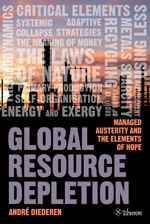Read more at the Washington Examiner: http://washingtonexaminer.com/opinion/columnists/2010/12/michelle-malkin-dems-lame-duck-land-grab-wont-pass-without-fight#ixzz1BgnnDjMF
Michelle Malkin: Dems’ lame-duck land grab won’t pass without a fight
Examiner Columnist
Yes, the hurdles are high. But with Reid and company now vowing to work straight through Christmas into the new year (when politicians know Americans are preoccupied with the holidays), anything is possible. The Constitution is no obstacle to these power grabbers. Neither is a ticking clock.
The Democrats’ brazen serial abuse of the lame-duck session is as damning as the green job-killing agenda enshrined in the overstuffed public lands package.
Earlier this month, Reid assigned worker bees on three Senate committees — Energy and Natural Resources, Commerce, and Environment and Public Works — to draw up their public lands wish list. All behind closed doors, of course.
House Rep. Doc Hastings, R-Wash., rightly dubbed it a “Frankenstein omnibus of bills” and pointed out that the legislation “includes dozens of bills that have never passed a single committee, either chamber of Congress, or even been the subject of a hearing.”
The sweeping bill bundles up scores of controversial proposals, including:
— A stalled land transfer and gravel mining ban in Reid’s home state of Nevada.
— The designation of the Devil’s Staircase Wilderness in Oregon as a federally protected wilderness where logging and road development would be prohibited.
— Multiple watershed and scenic river designations that limit economic activity and threaten private property rights.
— The creation of massive new national monument boundaries and wilderness areas along the southern border opposed by ranchers, farmers, local officials and citizens.
One New Mexico activist, Marita Noon, said the federal plans to usurp nearly a half-million acres in her state would result in an “illegal immigrant superhighway” off-limits to border security enforcement. Security analyst Dana Joel Gattuso pointed to a recent General Accounting Office report on how environmental permitting rules and land-use regulations have hampered policing efforts at all but three stations along the border
I actually left out the energy part. It is near the bottom. If you can bear the the Washington Toiletpaper for even a moment, go see. More next week.
:}






 Heatwave, drought and now the wildfires, like this one in the western region of Ryazan, are the worst in Russia’s modern history. Picture: AFP
Heatwave, drought and now the wildfires, like this one in the western region of Ryazan, are the worst in Russia’s modern history. Picture: AFP